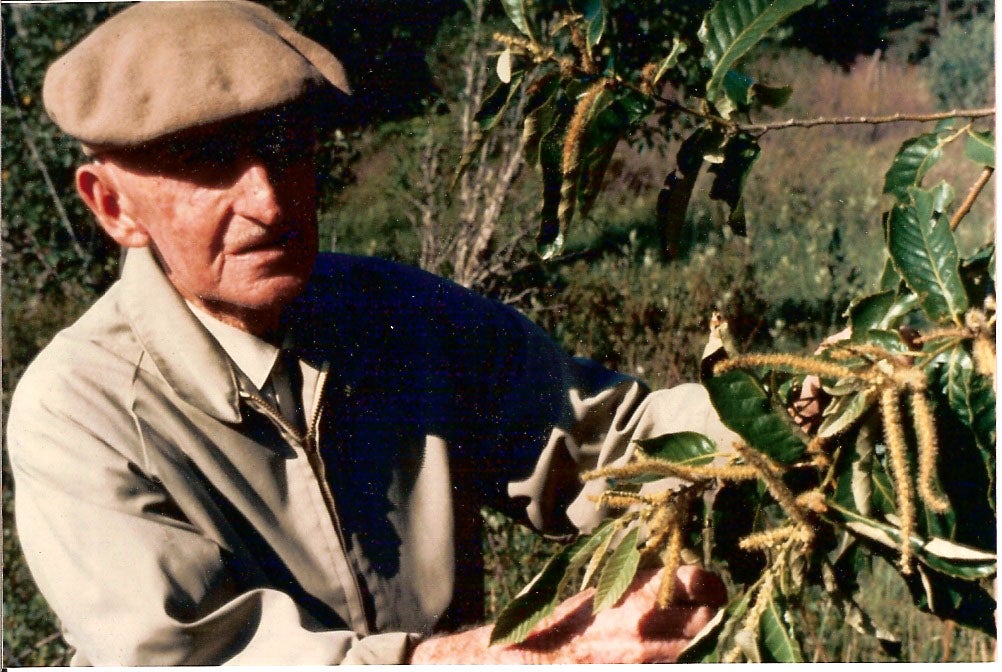The Origin of Dunstan Chestnuts for Feeding Deer
Russ Chastain 09.24.19

Last November, I planted some chestnut trees on a hunting property with the long-term goal of attracting more deer to the property. But why did I choose chestnuts? Here’s some information from Chestnut Hill Outdoors which should help explain that. It takes you from America’s early reliance on chestnut trees and how they were largely erased in the short span of about three decades, and how they are making their comeback — and how and why they’re great for your deer.
Before the first Europeans arrived, and for a long time after, the forests of eastern North America looked very different than they do today. For starters, they were far less disturbed, except by nature itself. Those forests were also dominated by American chestnuts (Castanea dentata), which grew 12 stories tall and wider at the base than two men could reach around, each capable of producing bushel baskets of nutritious nuts. Then in the geologic blink of an eye (roughly 30 years) they were effectively wiped out by a blight.
Half a century later, James Carpentar discovered a large, healthy American chestnut in Ohio that appeared to be blight resistant. He sent budwood to Dr. Robert T. Dunstan, a well-known plant breeder in North Carolina, who began grafting and later cross-pollinating American grafts with a mixture of USDA-released Chinese chestnut selections. After selecting individuals with the best hybrid characteristics, Dr. Dunstan crossed them back to both the American and Chinese parent trees, creating the Dunstan chestnut, a breed with the optimal combination of blight resistance and production of large, high-quality nuts.
Today, Dunstan’s great grandson, Iain Wallace grows Dunstan Chestnuts and a variety of other mast producing trees and shrubs at the family’s Chestnut Hill Orchards in Alachua, Florida. The family business, which began as a commercial chestnut orchard now produces stock specifically designed and cultured for wildlife mast orchards.
I’ve been to that orchard, folks, and I’ve seen the chestnuts they produce. They are large and frankly, they look delicious. But why plant them for deer instead of acorn-producing oaks? Here’s what Chestnut Hill sys about that:
While we all know deer love acorns, a preference for chestnuts is still permanently encoded into their DNA. They recognize the nutritional superiority of chestnuts, which contain 4 times the carbohydrates of a white oak acorn, 2.5 times the protein and only a fraction of the fat. They also have less tannins, making them a much sweeter, and thus more palatable.
Chestnut trees offer additional advantages to land managers as well. They grow faster and bigger, sometimes bearing in two to five years, where a white oak might not bear for 20 years. Eventually, chestnuts become prolific producers of hard mast that deer and other wildlife are so dependent on for their winter survival. They also lack the boom and bust cycles more common to oaks, and their blooms come out later in the spring so they are far less susceptible to broad scale mast crop failures caused by late freezes.
Planting different varieties of mast producing trees is a great alternative or supplement to conventional food plots. But if you’re making the effort, it behooves you to plant the best, most attractive varieties. You’d be hard pressed to find a more nutritious, more attractive hard mast tree than the Dunstan Chestnut.
They wrap up their latest PR email with this pitch:
Chestnut Hill Outdoors is more than just a nursery. In order to ensure you receive the maximum benefit from their products, they also provide sound advice and instruction on proper planting and care. For more on Chestnut Hill Outdoors products and how to care for them, visit ChestnutHillOutdoors.com, or call (855) 386-7826.
They ain’t lying — I’ve been in their office and listened to them patiently talking with customers on the phone, giving advice on tree selection and care. It’s impressive.
I just hope my trees will begin producing nuts before too long. I’ll surely keep you posted.